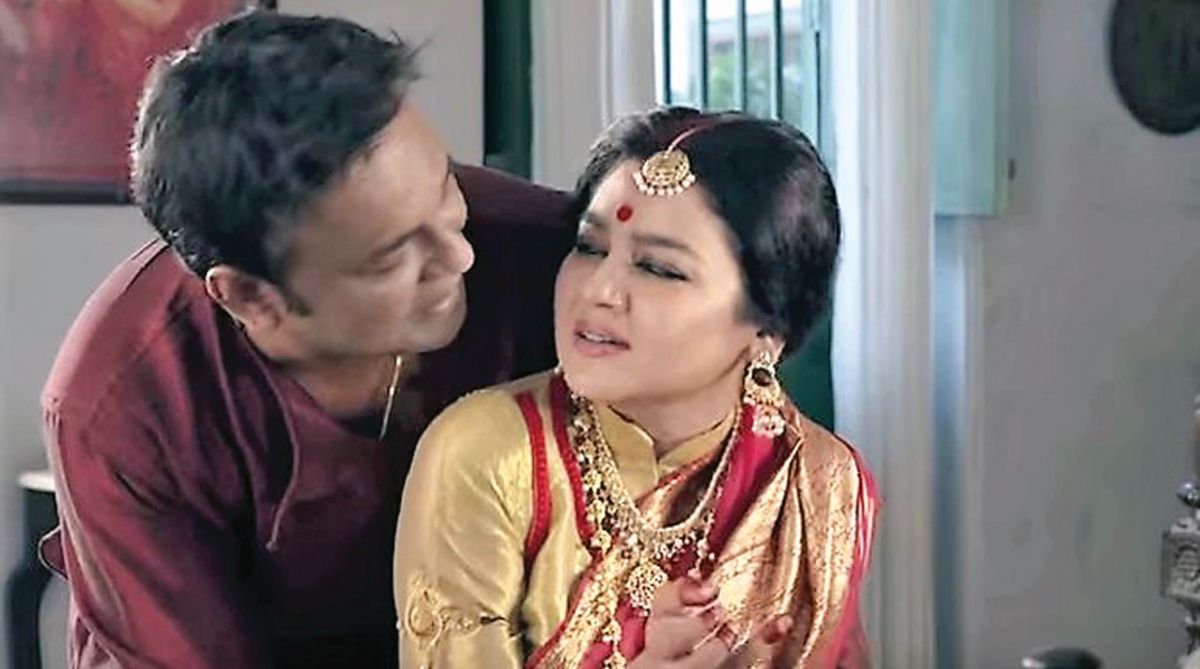Students explore war history through the lens of cinema
Cinematic endeavours wield the power to transport audiences across epochs, offering glimpses into foregone eras and shedding light on the history of human experience.

A still from Khacha.
When it comes to promoting better relations between the film fraternities in Kolkata and Dhaka, one must first be prepared to reconcile commercial interests with artistic initiatives on the screen that extend to other areas of cultural life.
Two recent events reflect the contradiction that has stalled the flow of films from both sides. One event was the release of what is meant to be a blockbuster to draw theatre audiences that don’t think beyond escapist entertainment. The other event was a session of new films from Bangladesh presented by the Federation of Film Societies at Nandan for an invited audience that looks for something that is more meaningful.
The two events had targeted audiences that had grown up with different tastes in cinema but had not been exposed to what was happening in Bangladesh. The stark reality of a potboiler like Bhaijan Elo Re co-existing with cerebral experiences like Doob: No Bed of Roses — both with conspicuous Bangladesh connections — can be compared to the similar scene in Kolkata that claims the success of Bisarjan and Paglu with equal enthusiasm from different sectors.
Advertisement
There is no reason to believe that the gulf between art and entertainment can be bridged. The question is whether the factors coming in the way of a regular exchange of films between the two Bengals — if not with the rest of India — can be resolved to the satisfaction of both sides.
The isolated efforts have not had a lasting impact. One production house in Kolkata has established links with a counterpart in Dhaka to extract the benefits of markets in both countries as well abroad. There is a large Bengali-speaking market waiting to be tapped.
Whether that market will respond positively to the colourful absurdities of Bhaijan Elo Re is not clear. But the potential numbers are tempting enough. Besides, the presence — and the influence — of a popular star may be good enough to help penetrate new markets. There is the added attraction of stars from Dhaka and Kolkata joining hands to create a new formula of entertainment.
Till now this constitutes only a fringe of the industry and is still quite tentative in nature. Babita, for instance, still recalls the experience of a Satyajit Ray film that had given her stardom. But Asani Sanket never went on to create more opportunities in West Bengal.
Bangladesh regulars like Razzak, Firdous, Anju Ghosh and Jaya Ahsan have had a more sustained run of assignments in Kolkata while Rituparna Sengupta and Parambrata Chatterjee keep flying to Dhaka. But all that has not helped to increase an awareness of developments on either side. One still has to wait for people who matter on both sides to sit down to a workable arrangement. The fears need to be dispelled.
Till that happens, the best option is to create slots with purely academic objectives. Memories of Goutam Ghose’s Padma Nadir Majhi are fresh while Ritwik Ghatak remains an enduring source of inspiration. In the current scenario, organisations like the Federation of Film Societies could join hands with Nandan to build sustained areas of creative understanding.
Kolkata-made packages are occasionally taken to cities like Bengaluru and Hyderabad. The idea is not only to reach out to the Bengali-speaking community but others who wish to get a taste of films beyond the selections for the Indian Panorama. The same initiative could bring positive results in Dhaka.
Quite clearly, there is a new generation of filmmakers in Dhaka that is rooted to the soil and yet inclined to experiment with new ideas and literary sources. Relying on chapters of social history, Khacha is a touching document on the dilemma confronted by a Hindu community after 1947. The choice was between remaining with their roots or migrating to India.
Much like MS Sathyu’s Garm Hawa, which explored a similar dilemma faced by a Muslim family in India, this film by Akram Khan had warm and restrained touches with an absorbingly human appeal. The cast includes Jaya Ahsan who lives up to the reputation she has earned with Bisarjan. But what was most striking was the authentic flavour of life drawn from a 1947 novel.
In quite a different category was Abu Sayeed’s Dressing Table that becomes the source of a human exploration with complex shades. The simplicity is quite deceptive and the acting far removed from the dramatic compulsions of popular cinema. Indeed, a more discerning audience can trace an inspiration drawn from Roshomon — indicating an interesting co-existence of serious introspection and a simple story of middle class life.
Alta Banu, on the other hand, tells the story of a courageous woman penetrating male bastions in order to find a lost sister. The treatment had a restrained tone that revealed a distinct effort to reach out to a serious audience.
Voyonkor Sundar was on more conventional lines with the rich and impetuous girl chasing a helpless fool from a different class. Parambrata Chatterjee does his best to rise above the clichés — without much success. But the Bangladesh package as a whole, that included an unusual film like Oggatonama on the tragedy of expatriate workers, revealed a new wave from Dhaka thriving on new ideas.
Advertisement